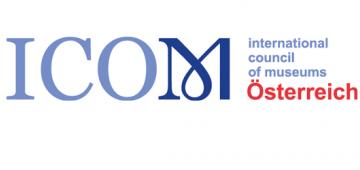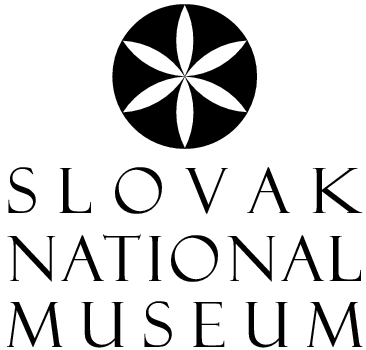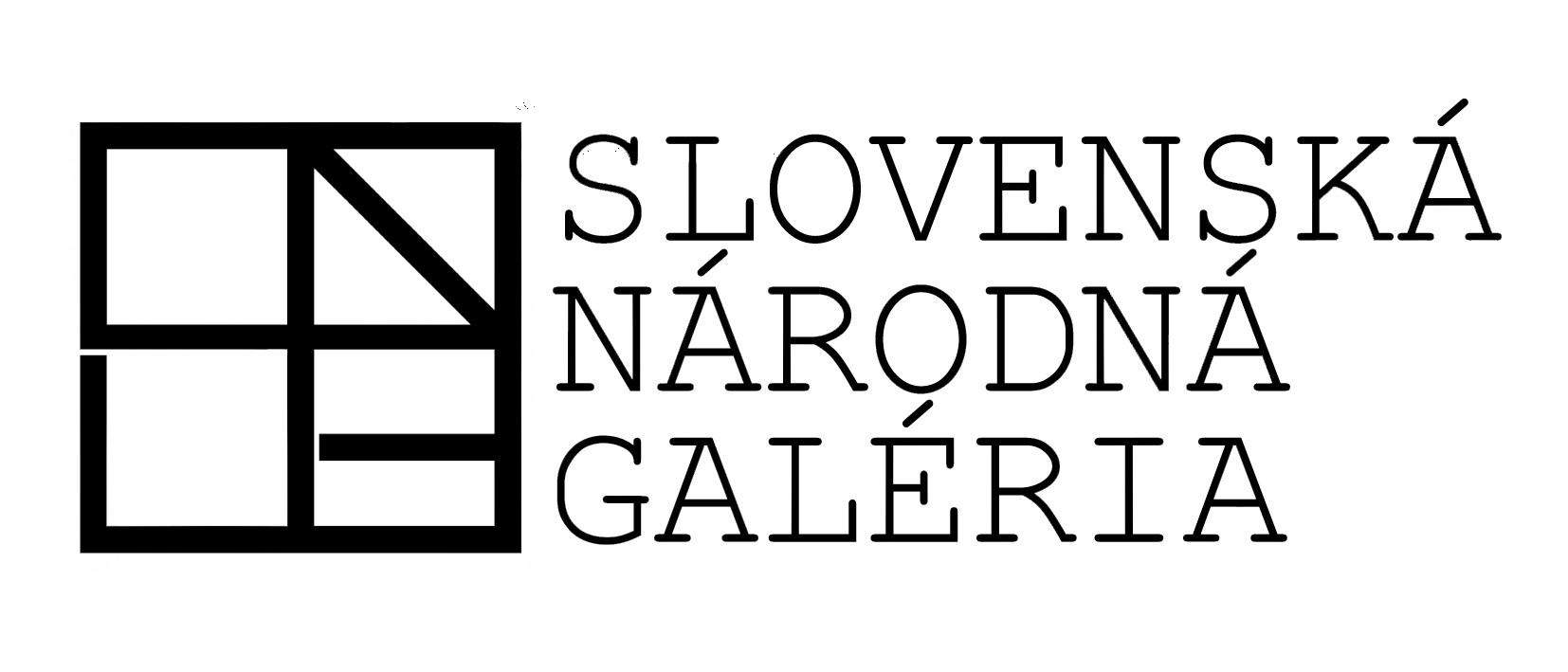Speakers
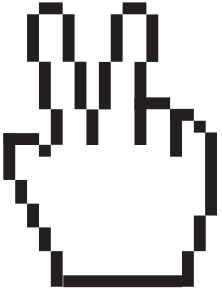 Thomas Aigner
Thomas AignerZuzana Bartošová
Katalin Borbély
Eryk Bunsch
Ana Carvalho & Alexandre Matos
Michal Čudrnák & Petra Hanáková
Judit Dorottya Csorba & Erika Koltay
Jan Dolák
Michael Faber
Hilde Fuchs
Henrietta Galambos
Paulina Gwoździewicz-Matan
Jakub Jareš
Pavel Jirásek
Martina Lehmannová
Peter Maráky
Dalibor Mikulík
Sarah Dominique Orlandi
Kati Price
Magdalena Izabella Sacha
Janos Tari
Josef Večeřa
Anna Soldánová
Zuzanna Stańska
Marek Šulík
Ústav technológií a inovácií s.r.o.
Florian Wienczek & Kasra Seirafi
Christa Zahlbruckner
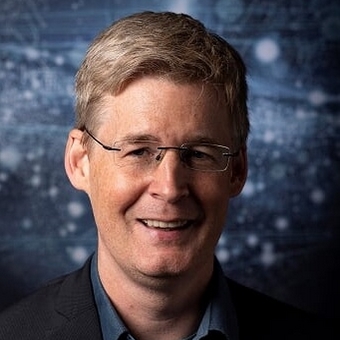
Dr Thomas Aigner, MAS
ICARUS – International Centre for Archival Research, Vienna
Thomas Aigner is a historian and has been the director of St. Pölten diocesan archives in Austria since 1995, founder of online platforms for charters, church registers and the international network ICARUS (since 2008 president). He is an author of many publications on modern archival science and central European history.
The Power of Big Data of the Past – Let‘s Build a Time Machine!
Show in programmeWhat would the world look like if we could access documents from the past as easily as present day‘s data? How would it be, if we could link all the data of our ancestors contained in any old record automatically with artificial intelligence? A consortium of more than 350 research institutions is currently aiming at nothing less than building a Time Machine. To succeed, a series of fundamental breakthroughs are targeted in Artificial Intelligence, Robotics and ICT. Massive digitisation infrastructures and High-Performance Computing will be coupled with Machine Learning techniques to produce a multiscale simulation of more than 5000 years of history. Miles of archives and museum collections will be transformed into a digital information system. The so generated BIG DATA of the PAST will enable us to deal with historical information in fundamentally new ways real revolutions will happen.
The Time Machine project will be this decisive turning point – turning a vision into (virtual) reality. The Time Machine plans to build a large-scale simulator capable of mapping 5,000 years of European history. This big data of the past, a common resource for the future, will trigger pioneering and momentous cultural, economic and social shifts. Understanding the past undoubtedly is a prerequisite for understanding present-day societal challenges and contributes to more inclusive, innovative and reflective societis. The fundamental idea of this project is based on Europe’s truly unique asset: its long history, its multilingualism and interculturalism. It aims to engage not only scholars but also European citizens, connecting millions of participants with millions of documents, massively participating to a unique endeavour: building a time machine to negotiate a common history of Europe.
Today, science and technology can profoundly transform the conservation and experience of cultural heritage impacting research, education, new applications and, as a result, the European or global economy and society at large. Computer and Data Sciences, Physics and Chemistry, Material Sciences and Robotics; these disciplines must join forces with the Humanities to get a new paradigm for Historical Sciences off the ground. To this end, a consortium comprised of the leading European institutions in Computer Science, Digital Humanities, Archival and Historical Sciences and Cultural Studies is aiming at becoming a future European large-scale research initiative. It seeks to effectively join forces with as many partners as possible who are willing to offer input from various professional backgrounds (science, technology, industry, content owners).
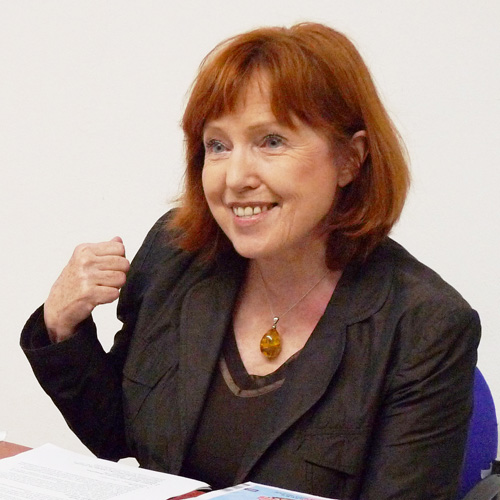
Mgr. Zuzana Bartošová, Ph.D.
Slovak Academy of Sciences, Art Research Centre, Bratislava
Zuzana Bartošová works as an academic researcher at the Slovak Academy of Sciences, Art Research Centre of SAS in Bratislava (Slovakia). She specialises mainly in domestic art history since the beginning of the 20th century until today with particular regards to the context of politics. She held the position of the director of the Slovak National Gallery between 1990 and 1992 and had established the Slovak section of AICA (Association Internationale des Critiques d´Art) and chaired the section between 1993 – 2000. She has taught at Trnava University and has authored and edited multiple monographs, academic papers and essays. She has also curated various domestic and foreign exhibition projects; she has organised and actively participated in numerous local and international academic conferences. She has collaborated with literary journals on longterm bases and is currently cooperating with the radio station Devín. Besides academic and popularising work she is also engaged in curating the prestigious collection of the First Slovak Investment Group and the administrator of a non-profit, publicly accessible Foundation – Center for Contemporary Arts which holds part of the archive of the activities of the unofficial Slovak art scene of the 1970s and 1980s.
Slovak National Gallery in the Time of the Velvet Revolution
Show in programmeThe Slovak National Gallery went through a turbulent period during the Velvet Revolution. The shift in the political orientation of the country decomposed the management of the institution previously consisting of ideologists – and found itself for a moment in a vacuum. The stabilisation of the institution took only two years (1990 – 1992). After the rise of the so-called ‘mečiarizmus’ (named after the then Prime Minister Vladimír Mečiar) in the Summer of 1992 the political influence had an impact on the structure, direction and future objectives. The gallery became trapped in regionalism for a very long time. Despite the shortness of time when the Slovak National Gallery was able to communicate as an equal partner within the European cultural context, several crucial changes came to fruition through an essential change in the statute of the institution. The new statute had transformed the organisation from a previous pyramidal hierarchy into horizontally structured organisation.
The gallery had three divisions: The Gallery of the Old and Modern Art, The Gallery of Applied Arts, Design and Architecture and The Gallery of Contemporary Art. The change helped to dynamize the activity of the institution and its conjuction within the European cultural environment. Communication with the public also changed. Openness and hospitability without devaluation of academic standards of the exhibitions and programmes was the main goal of the gallery within the above-mentioned period.

Katalin Borbély, MA
Katalin Borbély graduated from the Pázmány Péter Catholic University, Faculty of Arts and Social Sciences, as a graduate student in English, Art History and Pedagogy. In February 2014, she started working at the Paintings Department of the Museum of Fine Arts – Hungarian National Gallery and one year later, she became a member of the Legal Department, where she currently works as a registrar. In 2016, she participated in the training of Unicult2020 “The International Arts & Cultural Management and Policy Program”. She is one of the founders and regular speakers of the workshops organized by the Hungarian Registrars Group. She attended the meeting of the Working Group Digitalisation and IPR of NEMO during both the 2016 and 2017 conferences and did a presentation on the EU Copyright Directive at the Pulszky Society’s conference “Museums and Copyright”.
The Most Controversial Points of the EU Directive and what it Means for Cultural Institutions
Show in programmeOn 26 March 2019, the European Parliament voted to adopt the Copyright in the Digital Market Directive. That marked the end of a long and widely debated process which started on 14 September 2016 when the first draft of the Directive was proposed. Following several revisions, the Council of the European Union’s Committee of Permanent Representatives approved of the directives on 25 May 2018 and was ready to bring the paper to vote, but the Members of the European Parliament voted on not to proceed to the negotiation stage and instead decided to reopen the debate in September 2018. A “directive” is a legislative act that sets out a goal that all EU countries must achieve. However, it is up to the individual countries to devise their laws on how to reach these goals. Now that the Copyright Directive has been adopted at the European level, each of the 28 countries is required to “transpose” it by passing national laws that meet its requirements. This paper aims to highlight the most controversial points, along with the parts relevant to cultural institutions.

M.Sc. Eryk Bunsch
dipl. conservator of art, Museum of King Jan III’s Palace at Wilanów
Eryk Bunsch has been collaborating with the National Institute for Museums and Public Collections since 2010 and since 2011 also with the National Audiovisual Institute as an expert in the field of modern 3D documentation of cultural heritage. He is the Head of Laboratory for 3D Documentation at the Museum of King Jan III’s Palace at Wilanów. His scientific interest considers developing technology of precise 3D scanning of cultural heritage objects (structured light scanning). He has managed many research projects related to 3D digital documentation. His articles are combining different spheres of his scholar activity: conservation of art, 3D documentation and archaeology.
To Be or Not to Be – Proper Digital Strategies for Museums
Show in programmeLooking at the last thirty years, I recall the statements of some of the cultural institutions´ staff saying that “Digitalization is something that we need to wait out”. Today such statements can be considered only as a joke. The significant impact of the usage of the digital documentation of monuments in all areas of museums activity cannot be overestimated. The widespread use of 2D and 3D visual documentation (along with the describing of its technical and descriptive metadata) is no longer a “trend” but has become one of the most crucial tools of the everyday museum workflow in a modern cultural institution. The attempt to create a universal digitalization strategy is as impossible as an attempt to describe the universal model of economic development applicable for each country. Just as every country has different geographical conditions, resources and traditions, museums differ in terms of housing, the type of collections and the role they play in the local community. With regards to each institution, it is necessary to describe all those parameters at the beginning of the digitalization process and precisely define what type of digital data we want (and can) produce and how we will use it (today and in the future).
Digitization is absolutely not a trend, but it is a must. However, it is also a very complicated process that requires excellent awareness and close cooperation between all the museum’s departments. In planning a digitization strategy for a particular museum, you cannot rely on perfect, ideal, universal solutions because there are no such ready scenarios. Instead, based on the broadest possible knowledge, we need to make decisions on many compromises, to optimally use existing hardware and software tools.
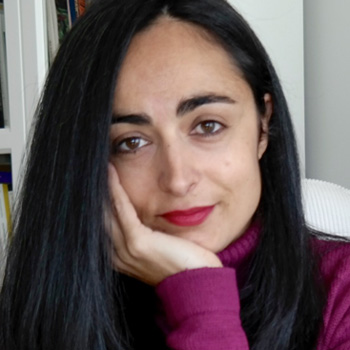
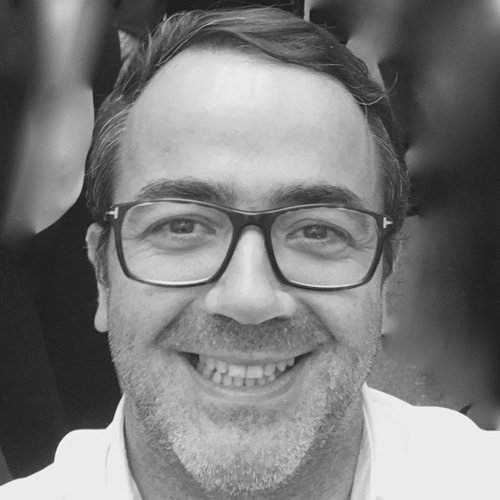
Dr Ana Carvalho & Alexandre Matos
ICOM Portugal, CIDOC (ICOM International Committee For Documentation)
Ana Carvalho is a postdoctoral researcher at the Interdisciplinary Centre for History, Cultures and Societies (CIDEHUS) of the University of Évora (Portugal), and is a researcher for ICOM Portugal in the Mu.SA – Museum Sector Alliance project (2016-2019). She holds a PhD. and a Master’s degree in Museology from the University of Évora. She is a member of the editorial board of the Portuguese scientific journal MIDAS, Museus e Estudos Interdisciplinares and has published Museus e Diversidade Cultural: Da Representação aos Públicos (2016), Os Museus e o Património Cultural Imaterial (2011), and edited Participação: Partilhando a Responsabilidade (2016). She was the editor of the ICOM Portugal bulletin from 2014-2018.
Alexandre Matos holds a PhD. and a Master’s degree in Museology from the University of Porto (Portugal). He is currently Director of the Department of Research and Training of Sistemas do Futuro, Lda., and Affiliate Professor in the Department of Sciences and Techniques of Cultural Heritage at the University of Porto. He is also project manager for ICOM Portugal in the Mu.SA – Museum Sector Alliance project (2016-2019). He is also a member of the current governing body for ICOM Portugal and a member of the CIDOC board.
Moving Museums Towards Transformation and Change in a Digital World: Insights from the Project Mu.SA
Show in programmeOur society is becoming more and more dependent on digital technology, and there can be no doubt that there are inevitable consequences for the museum sector. Research shows that technology development is one of the factors most likely to affect museums in the future, as well as: demographic changes, increasing mobility, public policy retraction, sustainability and participation. The need for museums to adapt to social changes, namely embracing the digital world challenges, is already an aspect foreseen in several studies and reports shaping public national museum strategies. That is the case of Agenda 2026: Study on the Future of the Dutch Museum Sector (2010), the Rapport de la Mission Musées do XXIe Siècle (2017), and the UK report on Culture is Digital (2018), among others.
In this context, the potential of digital tools is underlined, not as an end in itself, but rather as one of the means (potentially) available for museums to reach their mission and strategic goals. To recognise the rise of digital technology as one of the challenges currently facing contemporary museums means stepping back to reflect on how to orchestrate the acquisition of new knowledge, competencies and mindsets. Whether through formal training, such as a university degree, or non-formal training through lifelong learning, professional development will need to address new competences related to digital technologies as part of the changing dynamics and expectations of contemporary society.
Increasing digital literacy and confidence among museum professionals is a crucial aspect of supporting the digital transformation of museums and enabling change. That is the key argument that informed Mu.SA – Museum Sector Alliance (2016-2019), a European project funded by the Erasmus Plus Programme that focusses on the development of digital competences in the museum sector by supporting ongoing professional training in Greece, Italy and Portugal. In this paper, we will present an overview of the project Mu.SA: aims, research methods and outputs. Furthermore, we will examine the key findings of the first phase of the research for the Portuguese case study, focusing on the challenges identified.


Mgr. Michal Čudrnák & Mgr. Petra Hanáková, PhD
Slovak National Gallery, Bratislava
Michal Čudrnák works at the Slovak National Gallery as the Head of Digital Collections and Services. He took part in the preparation and implementation of the information system for galleries called CEDVU. Along with the team of the lab.SNG he is responsible for the developement of the online catalogue for art works called Web umenia and many other digital products for galleries and museums. He is currently also working for the Slovak Design Centre, and he is responsible for the implementation of their new system for collection evidence and cooperates on the developement of a new web page for the museum.
Petra Hanáková is an art historian and a curator. She graduated from Visual Art Studies at the Faculty of Philosophy at Comenius University and also has a bachelor’s degree from Film Studies at the Academy of Performing Arts in Bratislava. She worked at the Institute of History of Art at the Slovak Academy of Sciences, and the Department of Art Studies at the Film and Television Faculty at the Academy of Performing Arts and the Institute of Arts and Research at the Academy of Performing Arts. Since 2008, she has been working as the curator of the Collection of Other Media at the Slovak National Gallery. She specializes in museum theory, Slovak film and visual culture of the 20th and 21st century and curatorship.
Čas-opis 1989
Show in programmeČas-opis 1989 is a digital project created by the Slovak National Gallery which aims to show the less known aspects of the Velvet Revolution. The project explores visual culture of November 89, main ideas and how they were communicated by means of photography, leaflets, audio and video materials. Extensive visual material is convoyed by commentaries of involved personalities, or experts in history.
The web page provides thematic units that explore the changes in public space, media, and cultural institutions from a perspective of thirty years after the Revolution. A ‘day-by-day’ framework is provided by the diary of a conceptual artist Július Koller called Čas-opis – which in Slovak language means Journal when without hyphen and when regarded as two separate words it means time and description. The presentation will talk about the process of the creation of the web page – from the initial discussions on the form, choice of material, cooperation with external experts to the developement and the campaign preparation.
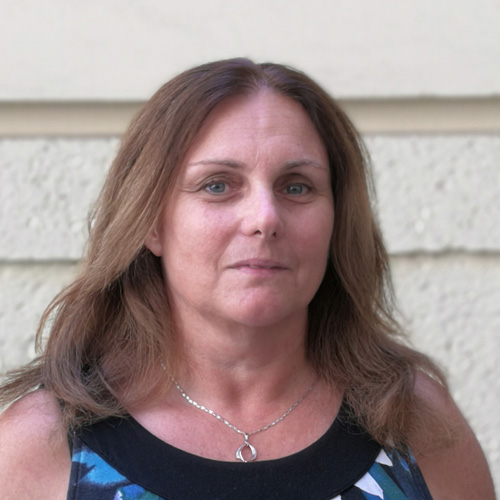
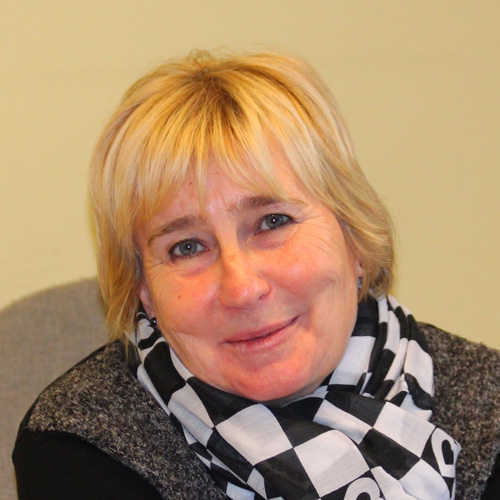
Judit Dorottya Csorba, M.A. & Erika Koltay, M.A.
Museum of Ethnography, Budapest
Erika Koltay is an ethnographer and biologist. She has received her degree at Eötvös Loránd University in Budapest. Her main activities are museum education and museology. She worked at the Semmelweis Museum of Medical History from 1989 until 1992 and taught Ethnobotany at Eötvös Loránd University, Budapest between 1991 and 1993. She worked as the secretary of Fieldwork Department, Hungarian Ethnographic Society from 1996 until 2000 and has worked as a curator at the Museum of Ethnography in Budapest since 1992.
Judit Dorottya Csorba is a curator and a filmmaker. She received her master’s degree from History, English, Ethnography at Eötvös Loránd University in Budapest in 1990 and in 1991 also from Visual Anthropology at the University of Manchester. In 1996 she studied Documentary Filmmaking at the University of Theatre and Film Arts in Budapest. Her main activities are curating film and photo collections and documentary filmmaking. She has worked as a curator at the Museum of Ethnography in Budapest since 1992. She taught Visual Anthropology at the University of Miskolc from 1995 until 1998 and at Eötvös Loránd University in Budapest between 1992 – 1995. She was the leader at the Film and Photo Department of the Hungarian Ethnographic Society between 2013-2016.
Multifunctional Use of Audio-Visual Documentation in the Museum of Ethnography, Budapest
Show in programmeThe Museum of Ethnography in Budapest treasures a huge collection of audio-visual materials, including thousands of metres of archive film, over 400.000 photographs, thousands of audio recordings and other smaller collections containing artefacts in the visual arts. The digitization of audio-visual collections started twenty years ago, and since then a significant part of these documents has been converted and included in a database, developed especially for museum purposes to help the multifunctional use of images, films and other recordings. During the history of the almost 150 years old museum, visual documents have always been used in a very diverse way. However, the prevailing practice was to display these items at exhibitions, with the intention to meet the technical requirements of the period as well as the demands of the visitors. Besides the traditional ways of presenting visual documents in exhibitions, recently, there has been an increasing demand to present digital content in the field of museum education, communication, social media and research.
The most overwhelming requirement from the public is to make digital heritage accessible online for everyone. To accomplish this essential task, for the last couple of years, curators have been working on preparing digitized visual documents in order to publish them on the website of the museum. During the following years, the Museum of Ethnography is moving to new storage and exhibition buildings, and therefore it had to close its exhibitions and research services. However, until the reopening, it is crucial to have ongoing communication with the former and hopefully new visitors and researchers. For this reason, archive films, images and recent visual documents are adopted to e-learning programmes, virtual exhibitions and research presentations. This activity does not only serve communicational goals but helps to preserve tangible and intangible heritage, too. The planned presentation gives examples of the most recent projects that reflect the changes in the use of audio-visual materials demanded by the digital revolution of museums, as well as by a special situation the museum faces while moving to new premises.
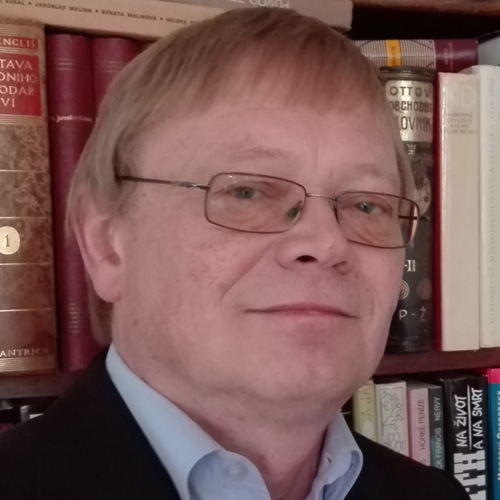
PhDr. Jan Dolák, PhD
Faculty of Arts, Comenius University, Bratislava
Jan Dolák has graduated from History, Museology and Archaeology in Brno. He had held managing positions at several Czech museums and was the chief of the UNESCO Chair of Museology and World Heritage at Masaryk University in Brno between 2002 and 2014. He is currently an Assistant Professor at the Faculty of Arts at Comenius University in Bratislava. He is active in the International Committee for Museology ICOFOM, member of editorial boards of several academic journals, he organises international conferences and often lectures home and abroad. He has authored over a hundred academic papers including several monographs. His work has been translated into English, Russian, Chinese, French, Portuguese and German. He is a former Chair of the Museology Committee of Czech Museums and Galleries and currently the chair Chair of the Museology Committee of the Association of Czech Museums and Galleries. He specialises in museum theory, museum acquisition and presentation, history of museum culture and museum management and marketing.
Is Digitizing for Museum Professionals or for the Public?
Show in programmeThe past thirty years have brought essential changes in our society, obviously notwithstanding the museum environment. Fortunately, the changes have not been radical with regards to the acquisition policy. However, the exchange of the museum management and specialised museum professionals was inevitable. We can be satisfied with their professional skills regarding the fields they have studied (History, Archaeology, Natural Science, etc.); however, we can hardly talk about advancement with regards to profounding their knowledge of Museum Theory. We have seen an apparent, albeit still insufficient, advancement in the equipment of museums by new technologies, museum buildings are undergoing reconstructions, new depositories are being built and so on. We have seen multiple academic reflections of foreign literature, unfortunately often of unstable quality. New expositions often stem out of obsolete approaches. Perhaps the most apparent change is the rise of new technology. We can hardly imagine the work of museum professionals from shop assistants selling tickets, documenters, or public relations department and conservators, curators to management without the new technologies. New technologies, including the digital ones, are mostly implemented into expositions and exhibitions, they activate museum websites, and that is obviously right.
The question is how to proceed with the digitization of museum collections? The benefits of new technologies within the internal operation of museums are surely undoubtful. Largescale digitising projects are focused on education and on competitiveness; therefore, the first and foremost goal is not improving the operation of memorial institutions but to benefit the whole society. Is the digitisation of collections to benefit education and competitiveness through researchers and students? Should the texts in digitising projects be poetic or strictly academic? Should we visualise singular objects rather than larger units in which the singular objects play significant roles?
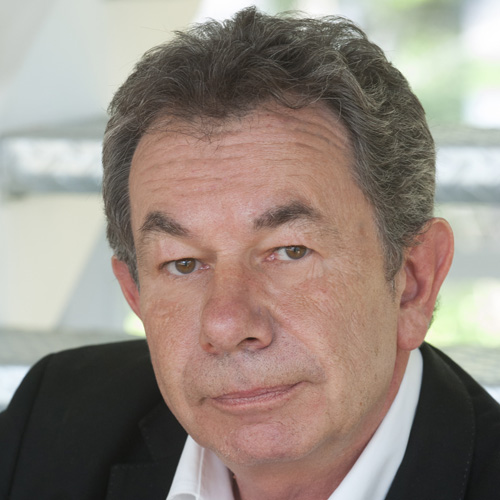
Dr Michael Faber
AVICOM (International Committee for Audiovisual, New Technologies and Social Media ICOM)
Michael Faber worked as a Scientific Assistant at the Institute of Volkskunde (Cultural Anthropology), the University of Bonn between 1980 -1983. He curated several exhibitions in Germany and Switzerland. He worked at the LVR Open-Air Museum Kommern – State Museum of Everyday Culture History of the Rhineland from 1983 until 2018. He was responsible for museum education, media production, exhibitions, staff training, event management and was appointed Deputy Director in 1995 – 2018. He is a member of the Founding Board of AVICOM. Between years 1991-1998 and 2013-2019 he was the AVICOM Vice President and between 2019-2022 its President. Since 2019 he has been a member of the ICOM National Committee Germany working as a consultant for “Disaster Management in Museums and Cultural Sites” agenda.
No Future without Instawalk and Virtual Reality? Provocative and Highly Personal Theses about Sense and Nonsense, Use and Abuse of New Media in the Museum Context
Show in programmeIn the first part of the presentation, development and change of the tasks of AVICOM as ICOM International Committee for Audiovisual, New Technologies and Social Media since its foundation in the early 1990s are outlined. At the international level,AVICOM aims to promote the exchange between museums and media experts, to draw attention to innovative, trailblazing developments, projects and productions. In doing so, AVICOM is increasingly confronted with the task of critically reflecting on developments in the media field. Do museums feel under pressure due to global media developments and changes in communication? How does this affect the museum work, the museum management, the staff and the budget? Are the classic standards of good collecting, preserving, researching and mediating shifting? Does the original, the authentic still play a role? Or has the effect become the determinator of museum quality? Should museums not even be reservations in a cyberworld?
The second part deals critically with ways of using digital / social media in the museum context: The use of digital and social media, of animated and interactive media, or Virtual or Augmented Reality and the offer of special media events must be part of an overall museum concept, not an additive. The conceptual coordination of media with other forms of presentation and mediation is imperative. Finally, the question of target group orientation arises. With which media can target groups be reached, bound or even integrated into the museum work? Can the media help to overcome social and cultural gaps, include people with special needs? Does not the direct personal contact between visitors and museum staff remain the main guarantor for “museum experience” and thus also for a lasting museum success?

Mag. Hilde Fuchs
Hilde Fuchs graduated from the Fashion School of the City of Vienna in 1984 and the Academy of Applied Arts in Vienna in 1990. She has been organising workshops for experimental dramatic art, particularly continuing the J. Grotowski method since 1987. She has also worked in the field of the costume and stage design with realizations in Vienna, Salzburg, Budapest and Lisbon. She has also experimented with room / video / sound installations, objects, projects in public space and performances. She was awarded the 1st Prize “Karl Hofer Prize” – University of Arts, Berlin in 2002 and the Grant by Austrian Federal Chancellor Office for the “ISCP-Program” in New York in 2004. In 2018 she received a States grant for visual art by the Austrian Federal Chancellor Office. She has worked as a curator and manager of the museumORTH, Orth an der Donau /Lower Austria since 2005.
MARCHFELD – Over Here and There. A Region on Both Sides of the March / Searching for Traces, Leaps in Time and Artistic Strategies
Show in programmeThe MuseumORTH in Schloss Orth (opened in 2007) presents regional cultural history as an interdisciplinary museum experience. It offers a discursive location with thematically current and artistically demanding implementations. The program follows three thematic tracks: Regional Culture, Renaissance Castle Orth and Contemporary Art. The curated exhibition series “Everyday Culture and Contemporary Art” take place twice a year. The aim is to create a lively contemporary context and make current art productions accessible to a broad public.
On the occasion of the 30 years of the Fall of the Iron Curtain, the theme of the museum season 2019 is: MARCHFELD – Over Here and There. A Region on Both Sides of the March. The special exhibition goes in search of clues for similarities “over here and there”. The exhibition is carried out in cooperation with the Záhorské múzeum in Skalica (Slovakia) and 20 municipalities on both sides of the March.
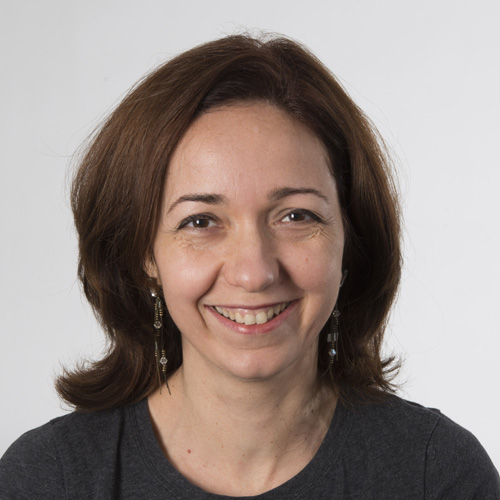
Dr Henrietta Galambos
Henrietta Galambos works as the Head of the Legal Department at the Museum of Fine Arts (Budapest). She has a law degree from the University of Szeged and a Diploma in Art Law Policy and Management from the Institute of Art and Law, London. She has broad international experiences related to the activities of UNESCO, the European Union OMC Expert Working Group on the Mobility of Collections 1, NEMO and the European Registrars’ Group in particular. Henrietta is one of the founding members of the V4 Active Collections Project 2 and a member of the Core Group set up in the framework of the Project. She is a visiting professor at the Pázmány Péter Catholic University where she teaches museum management. Henrietta is a regular speaker at conferences and courses on museum law and the legal aspects of collections management.
Active Collections – a Vision for a More Advanced and Effective Utilisation of Museum Collections
Show in programmeWith the active involvement of experts from the Visegrád Group countries, the European Union has profoundly been dealing with the topic of collections mobility in the last two decades. Within the framework of this process, international conferences, expert training and publications have been conducted. The purpose of those was to define the legal and administrative obstacles for the mobility of the collections, to explore best practices and theoretical solutions in order to help European audience gain more extensive access to the diverse and vibrant cultural heritage of Europe. The natural consequence of the outcome of the indispensable work of the collections mobility experts is the Active Collections Project that focuses on the new ways to approach the collections and collecting related activities in accordance with the desire of the 21st century for sustainability and the need to reduce costs.
Twenty years ago, the organization of high-cost blockbuster exhibitions was thought to be the most effective way of sharing our cultural collections. Now topics like strategic planning, determining the significance of collections, acquisition policy (with special regard to joint purchases), deaccessioning and disposal policy, long term loans, touring exhibitions, digitization and engaging museum’s community come to the fore. The lecture will highlight these subjects with special regard to the digital cultural heritage – from the legal point of view, and illustrate them with recent examples from the museum world.
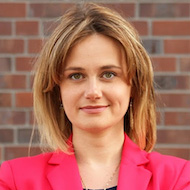
Paulina Gwoździewicz-Matan, PhD
The University of Silesia in Katowice, Faculty of Law and Administration
Paulina Gwoździewicz-Matan is a PhD assistant professor at the Department of Civil Law and Private International Law at the Faculty of Law and Administration at the University of Silesia, and she is also a legal counsel in the law firm Kancelaria Matan, where she provides legal services for cultural institutions. Her main research focus is on the issues of intellectual property and cultural property law. She authored several publications in the field of the functioning of the art market and copyright aspects of the activities of cultural institutions. She took an active part as a speaker at many conferences, including international ones, seminars and trainings. She cooperates with the National Institute of Museology and Public Collections in Poland, and she was a member of the expert group acting on behalf of the Ministry of Culture and National Heritage for the amendment of the Museums Act twice.
Legal Aspects of Digitalization in Museums
Show in programmeMuseums face new challenges in the digital age. Traditional collections are transferred into digital copies and placed on museum websites. Depending on the scope of intellectual property rights museums are allowed or not allowed to publish the images of the objects on their websites. Cultural institutions, wishing to fulfill their mission of enabling access, research and education, very often treat this duty as fundamental. However, as long as the copyright is in force, museums must act within the limits of the copyright law. The paper deals with the problem of what is allowed in everyday museum practise, what type of exemptions cultural institutions can use to exhibit online and how far the new Directive on Copyright in the Digital Single Market regulates these issues.
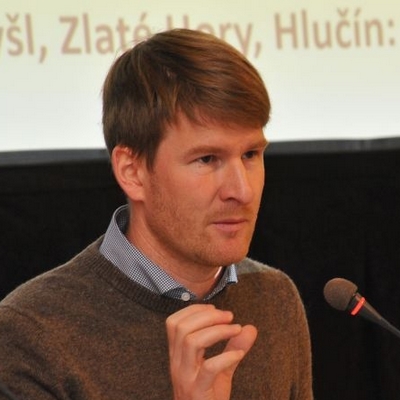
Mgr. Jakub Jareš, Ph.D.
Institute for the Study of Totalitarian Regimes, Prague
Jakub Jareš is an art historian, curator and publicist. He works at the Institute for the Study of Totalitarian Regimes in Prague focusing on the research and presentation of contemporary history in Czech museums. He coordinates a project called exponaut.cz as a freelance curator and has recently collaborated with the National Museum of Agriculture, Charles University, Czech Philharmony and Czech Television. He is an editorial board member of journals Paměť a dějiny and Cultures of History Forum.
Czech and Slovak Museums in the European Context
Show in programmeSince 1989 Czech and Slovak museums have been expanding in the context of European and virtually universal context. Thirty years after the revolution, we came to a proper moment to evaluate the state our museums have reached over that period. I will be illustrating the commonalities and differences of the development in Czech and Slovak museums oppose to five chosen phenomena resolved in the European or universal context. 1) What was the impact of the new museology stimuli on the Czech and Slovak museums? 2) Are we experiencing a similar trend in the development of memorial institutions (memorial museums) as in the world-wide context? 3) Why have we not seen a museum boom in our environments such as in Germany, Poland or Estonia, yet? 4) In what form can we see new technologies reaching our museums? 5) And last is it reasonable to continue the debate on decolonisation that had begun in the western countries within our region?
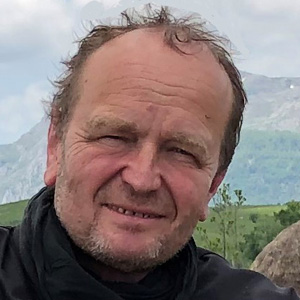
Ing. Pavel Jirásek
Culture Tech s.r.o., Museum of the City of Brno
Pavel Jirásek was the director of the Department of Movable Cultural Heritage Protection at the Ministry of Culture of the Czech Republic from 1996 until 2006. He is one of the leading creators of the programme called Integral System of Movable Cultural Heritage of the Ministry of Culture of the Czech Republic. He took part in numerous projects dealing with cultural heritage protection and presentation and creative industry as a consultant or coordinator or executor. He has practical skills with the preparation of strategic materials for the Ministry of Culture of the Czech Republic and also with the implementation of the European Commission programmes, Norwegian Financial Mechanism and EHP as well as the European Union Structural Funds for project support of cultural organisations, and proprietors of collections with museum character and cultural sites.
He was the Chair of the Executive Board of the International Section for Cultural Institutions Safety established under the International Museum Committee ICMS ICOM between 2001 and 2007. He was also the Chair of the Committee of the Centre for Documentation of Property Transfer for the WWII Victims (Institute for Contemporary History, Academy of Science of the Czech Republic) between 2006 and 2009. He has been a board member of ICOM Czechia since 2015 and has been a long term member of the Committee for Museum Safety in the Czech Republic (AMG ČR). He publishes both in Czechia and abroad and specialises in the topics regarding cultural heritage safety, cultural institutions development, and restitution of cultural sites. He was and is currently involved in many projects organised by UNESCO, ICOM, Council of Europe, Museum Safety in the Czech Republic (AMG ČR), European Commission. He is a consultant for a number of distinguished cultural institutions. He has been involved in various projects regarding research and development.
Cultural Heritage Protection and the Development of IT after the Fall of the Iron Curtain
Show in programmeThe fall of the Iron Curtain and the consequent opening of the borders pointed to the lack of safety of our cultural and clerical institutions and their inability to deal with criminal activities. The rise of theft after the revolution in 1989 was terrifying. The open borders, unfortunately, facilitated the acceleration of almost uncontrollable movement of cultural sites across the borders, and most of them were stolen. The market of the more developed western countries absorbed the rising numbers of art pieces from the countries of the former Communist Soviet Block. Photo documentation and digitizing of the endangered cultural heritage including the development of specific transfer networks helped to diminish the criminal activities. Cultural heritage safety became a political agenda. With regards to this unfavourable trend of increased criminality the Ministry of Culture prepared an act called „A List of Measurements for Tackling the Critical Situation Regarding the Safety of the Collections, Expositions and Depositaries of Cultural Sites in the Czech Republic“ and it was approved by the government after a long discussion in the second half of the year 1991.
In 1992 the government allowed an increase in the budget aimed for the safety of cultural institutions institutions and they were able to buy computers and video technology. Thanks to this technology, specific documentation of the stolen objects was collected in a database of lost objects of cultural importance. Also in 1992 a system of centralised safety has been implemented in museums thanks to which museums were connected with police stations. The system works with some changes until today, and many cultural institutions are connected within the system. In the past thirty years, the theft of movable cultural heritage was not eliminated completely; however, the state-funded system of cultural sites protection had facilitated a significant decrease of cultural heritage related criminality. The rapid development of digital technologies has significantly contributed to the increase in the safety of cultural heritage. On the other hand, the proportion of the finances allocated for cultural heritage safety from the state budget have been diminishing significantly in the past years.
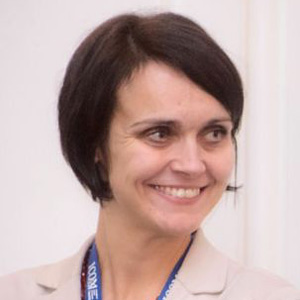
Mgr. Martina Lehmannová
Martina Lehmannová studied at the Faculty of Arts at Masaryk University in Brno and has worked in the field of art and history since then. She has collaborated on the preparation of several local and international exhibition projects and expositions at The Moravian Gallery in Brno, The City of Prague Museum and The Museum of Decorative Arts in Prague; she has authored publications on art and history for academic and general audience. She has also cooperated on the restoration of Jurkovič House in Brno, and curated the permanent exposition at Josef Hoffmann’s House in Brtnica and also the permanent exposition called Crafts in Guilds / The History of Craftsmen’s Association from the Middle Ages to the Present at The City of Prague Museum. She was the project manager of restoration and conservation of the Gobelin tapestries from the collections of the Museum of Decorative Arts in Prague. She has been appointed the director of Lidice Memorial in 2017. She has been an individual member of ICOM since 2007, and since 2015 she has been the President of ICOM Czech Republic.
The Commemoration of the Heritage of Lidice Village through Virtual Reality
Show in programmeThere has been a tragedy in Lidice on the 10th of June in 1942. Men were shot dead, women sent to the concentration camp in Ravensbrück, some individuals were chosen to be ‚Germanised‘, but most of them were brutally killed by car exhaustion gas in Polish Chelm. The village was sacked, burnt and most of the buildings and the cemetery were blown up while the debris filled up the fishpond. The village turned into a moorland after some time. New maps were published without the village called Lidice. The first commemoration ceremony to mark the decision to restore the village took place on the 10th of June in 1945. The restoration was supported world-wide and also further activities such as the foundation of The Rose Garden, or the collection of Lidice modern art or the concept of the International Children’s Exhibition of Fine Arts were supported beyond the national borders.
After 1989 Lidice experienced an abrupt fall from the peak of international interest into oblivion. In 2000 the Ministry of Culture resolved the situation by taking over the administration of the memorial. The traditional activities were renewed, and some new ones were added to the programme. The development of the activities and the creation of new ones are closely related to the possibilities of the virtual world. The primary added value is accessibility. The International Children’s Exhibition of Fine Arts Lidice has been digitally documented since 2003, and the awarded artworks are published online which allows all the participants to access the results immediately after the evaluation no matter whether they are from Indonesia or Czech and Slovak Republics. Another specific project that is based online is the International Knowledge Contest Lidice for the 21st Century founded in 2006. It aims to contribute to keeping the memory of the Central Bohemian village Lidice and historical events connected to World War II. The answers to the questions from the contest are accessible online, and the children do not necessarily have to travel to Lidice in order to take part in it. They can find everything in the virtual world. The contest is aimed at teaching the content but also on the utilisation of the sources and critical thinking.
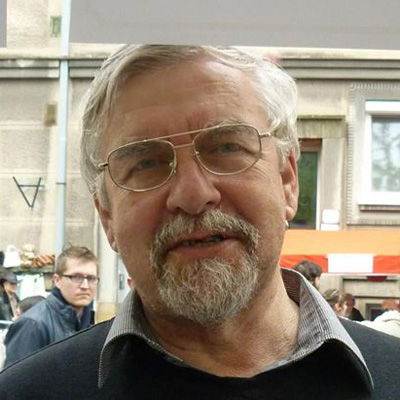
PhDr. Peter Maráky
The Monuments Board of the Slovak Republic – editorial office of Monuments and Museums, Bratislava
Peter Maráky is an ethnographer, monuments preservation specialist and museologist. He graduated from the Faculty of Arts at the Comenius University in Bratislava in 1974 and received his PhDr. title in 1981. He had held managing positions in various regional, specialised and state memorial institutions. He was a general director of the section of the State Monument Preservation of the Ministry of Culture between 1998-2002. He has been the chief editor of the journal Pamiatky a múzeá since 1991.
Enticements and Risks of the Lack of Control over the Dynamics of Changes within Museums
Show in programmeBrief characteristics of the situation in Slovak Museums at the fall of the 1980s. The chaos of the (re)organisation after the transformation of the regime. The liberalisation of museum activities after the Velvet Revolution: selection and collection without restrictions (but without money), the shifts in the acquisition plans, problems with spaces and their solutions. Establishing new museums. Thirty years long deficiency of presentation strategies. Museum and advertisement. Personnel downflow. A temporary diversion from educational activities and at the same time, the new passion for museum pedagogy. The issues with informatisation and the stagnant legislation. Digitizing of the collections as the priority of the field? The problems with restoration, conservation and taxidermy. Animation and the strategy of the Museum in Bojnice. Museum and the market. An overflow of strategic conceptions instead of effective coordination and planning. Funds and sponsoring. Attempts to create standards for museums. The birth of a university-level education specialised in museology versus the demands of the practical life. The state of the museum ‘network’ and the hierarchy of museums founded in Slovakia at the moment. The way out of the circle that the Slovak museum practice has reached in the past thirty years.
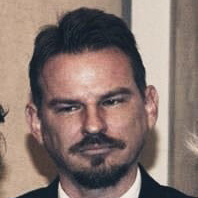
PhDr. Dalibor Mikulík
Dalibor Mikulík studied History and Philosophy at the Institute of Philosophy, Faculty of Arts, Prešov University.. He took on the position of the castle custodian at Ľubovňa Castle Museum after graduating from the university in 2003. He has been the director of the museum that administrates the medieval castle of Ľubovňa, museum of folk architecture underneath the castle and its baroque extramural settlement (42 compounds) since 2011. His main research objective is the noble house of Raisz – Lublóvary that used to own the castle and the abutting county in the 19th century. His foremost objective is the continuous restoration of Ľubovňa Castle, finalisation of the museum of folk architecture building as well as presentation and popularisation activities of the museum.
Ľubovňa Gothic Castle and Archeological Sights Presented in the form of Hologram
Show in programmeThe paper will present the utilisation of modern digital technologies with regards to the presentation techniques aimed at the visitors of the museum. Only a few people can imagine how the upper part of Ľubovňa Castle looked in Gothic times based on the ruins that are visible today. Animation allows us to present the exterior as well as the interior of the castle based on reliable historical documentation. The goal of the presentation is to show how the historical documentation of various types (maps, archival documentation) can be interconnected into a single digital output. The sources from archival documentation were used to create the final digital 3D hologram. The presentation will conclude by a short video about the making of the 3D hologram of the Gothic Ľubovňa Castle.
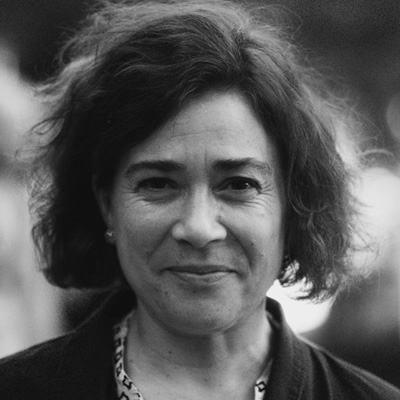
Sarah Dominique Orlandi
The Digital Cultural Heritage Research Group was created in 2015 by the Italian national committee of ICOM. It is made up of five professionals with interdisciplinary expertise in the field of cultural heritage: Sarah Dominique Orlandi, founder and coordinator, Gianfranco Calandra, Vincenza Ferrara, Anna Maria Marras, and Sara Radice. The research focuses on the museums’ web strategy, creating tools for their promotion, self-evaluation and planning. The work carried out by the Digital Cultural Heritage Group conforms with these aims. It acknowledges that one of the challenges that cultural organisations are facing is how to define, measure and evaluate their effectiveness on the web. The research group decided to define a set of parameters to enable a more in-depth observation. The survey has a twofold objective: to provide museums and cultural institutions with a practical tool for the analysis and monitoring of their strategic online orientation and to design a tool that precedes and supports the implementation of a web strategy.
The research group promoted a national survey to collect data for quantitative analysis: a research agreement was signed with the Italian Ministry of Culture. This research agreement, signed in 2017, has its bases in the 2015 MiBAC and ICOM collaboration agreement; one of the most important points of the agreement includes the ‘definition of national standards for museum’. Thanks to a research agreement between ICOM Italy and MiBAC2 the research group could reach a range of museums within the National territory. Enrico Bertacchini, University of Turin, carried out the data analysis. The ICOM Italy President, Tiziana Maffei and Valentino Nizzo, Director of the ETRU Museo Nazionale Etrusco, supported the project. We are now doing actions of dissemination and publishing a text with details of the WSS scheme, in which the 17 parameters are told in detail, as an ICOM Italia publication (October 2019).
Web Strategy in Museums: An Italian Survey Stimulates New Visions
Show in programmeA museum’s aim is to reach new audiences and find new ways of enhancing culture, or consolidate the relationship with their existing public: in an anaccessible, social and participatory manner. The web provides museums with additional tools to reach and consolidate the ‘heritage community’, an aim articulated in the Convention on the Value of Cultural Heritage for Society (Faro Convention, 2005). For any institution, a precise and well-defined online strategy is one of the principal tenets of its overall communication strategy. Therefore, defining an online strategy that conforms to the museum’s mission may prove difficult.
30 years since its birth, the Web continues to be used by all, however very few people know Tim Berners-Lee, its inventor. The apparently user-friendly Web has been designed with a visionary and far-sighted intent and has very precise rules of operation. How much do we know about these rules? And even if the Web is a good opportunity, one of the challenges that cultural organisations are facing is how to define, measure and evaluate their effectiveness.
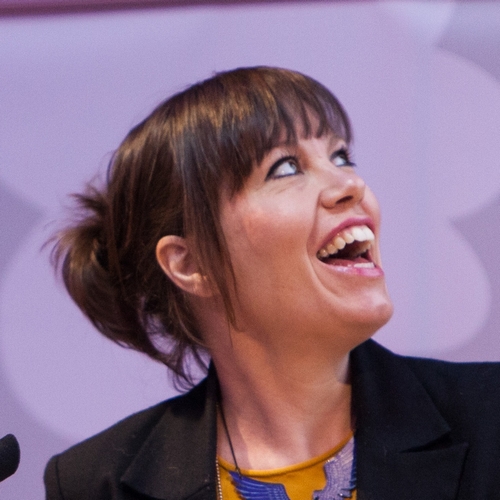
Kati Price, MA
Victoria and Albert Museum, London
Kati Price heads up digital media and publishing at the Victoria and Albert Museum, managing a team that works in technology, design and content. She’s responsible for the brand and user experience of the V&A’s digital estate and oversees content commissioning and production across digital and print. Since graduating from the V&A/Royal College of Art history of design Masters programme, Kati has specialised in content and communications, with experience in brand, PR, marketing and digital media. Over the past 20 years, she has worked with a number of design-led organisations, from non-profits like the Design Council and design charity the Sorrell Foundation to high-end retailers SCP and Vitsoe. Passionate about user-centred design, content and the digital realm, Kati has worked on award winning digital products and services, is a mentor and coach and regularly speaks at international conferences.
The Evolution – and Revolution – of Digital in the Museum
Show in programmeThe rise of the digital team within the museum has involved a rapid evolution over the past 20 years as well as some revolutionary moments along the way. Kati Price, head of digital media and publishing at the V&A, will chart the digital journey of museums towards the powerfully networked digital departments we see today. She will explore the digital future of museums, a future where storytelling will continue to be at their heart, but where digital skills are networked across the organization, and where digital will be truly aligned with the organisation’s mission.
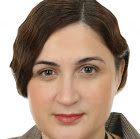
PhDr. Magdalena Izabella Sacha
Magdalena Sacha studied Polish and German Philology in Warsaw and Gdańsk and earned her PhD in 2004 with a dissertation on the cultural life of prisoners in the Nazi Buchenwald Concentration Camp between 1937 and 1945. She has worked as a research assistant at the Institute for Cultural Studies at Uniwersytet Gdański since 2004 and teaches Cultural Theories, Regional and Polish Cultural History, as well as Museology. From 2001 to 2009 she was the director of the Regional Museum in Krokowa in Northern Poland which was a branch of the West Prussia Museum in Warendorf in Germany. In 2017 she was a co-curator at the exhibition “Luther in Gdynia?” at the Town Museum in Gdynia. Since 2017 she has been a member of the Museum Council at the Museum of Upper Silesia in Bytom. In her recent research, she analyses the presence of social and religious minorities in the museum exhibitions with a focus on displaced persons.
The Eastern Borderland of Poland: Lost in History but Still Alive in the Virtual Exhibition?
Show in programmeThe problem: Presentation forms of the „lost homeland” and the experience of expulsion in Polish virtual museums and exhibitions about “Kresy” (the former Eastern Borderlands of pre-war Republic Poland). Historical background: During WWII Poland lost about 50% of its territory in the East to the Soviets republics of the Ukraine, Belarus and Lithuania and more than 2 mio Poles were forced to resettle into such called “recovered territories” in the West (former Eastern part of Germany, now Western part of Poland). But along with the loss of the “Kresy”, Poland also lost important centres of Polish culture like Vilnius and Lviv (university cities) with impressive museum collections. Situation before 1989: Under the communist rule the trauma of the expelled Poles had to be hidden in public, and any forms of association were forbidden for the displaced persons. Despite the huge importance of the culture of the lost Borderlands in the history and mentality of Polish society, all information about it had to be veiled – first of all in the public space like museums and exhibitions.
Change after 1989: Some very first exhibitions about “Kresy” were shown during the Solidarność-Carnival 1980-1981. But only after 1989 it became possible to present the topic of the forced resettlement after WWII. Many Polish museums organised exhibitions about the culture of the former Eastern Borderlands and the “new life” of the expelled in the West. However, for political and economic reasons there were no state policies for this issue and all exhibition initiatives were taken from the bottom up, usually by museum employees with the origin from the Borderlands. Nowadays there are some “wild museums” (private museums) and many virtual documentations of time exhibitions and virtual museums of “Kresy” as well (f.e. kresy-siberia.org). The main point of my presentation is to analyse the forms and strategies of these virtual exhibits in Poland, compared to a similar historical process in the post-war Germany, where the German displaced persons created 590 museum institutions dedicated to culture and history of Germans in the pre-war Eastern and Central Europe.
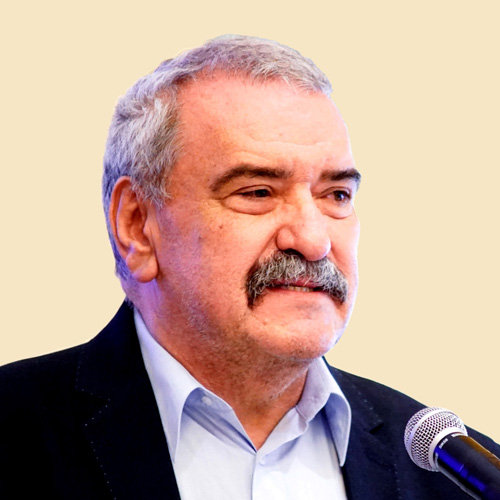
Dr Janos Tari, PhD
AVICOM (International Committee for Audiovisual, New Technologies and Social Media ICOM), Budapest
Janos Tari is the head of department of the Film studio and Archiv at the Hungarian Ethnographical Museum in Budapest where he had worked as a curator since 1981 and became the the head of the department in 1990. He directs and shoots documentary films as a cameraman in different subjects, organizes exhibitions on the history of ethnographic cinema and edits multi media and INTERNET ethnographic film catalogue of the Ethnographic Museum, as well as cooperates in the restoration project of archival ethnographic film records digitalization. He studied Hungarian Language and Literature and Ethnography at Eötvös Loránd University (1976-1982) and received his MA degree also from Sociology at the same university in 1983. Between 1987 and 1990 he studied direction and cinematography at the Academy of Drama and Film and later at the National Film and Television School in Beaconsfield (1990-1991). He received his PhD at Eötvös Loránd University in 2001. He has been a member of AVICOM since 1992 and has been a board member for more than 20 years now.
Visual Trends in the Award-Winning Museum Projects of the AVICOM f@imp Festival (Festival of Audiovisual International Multimedia Patrimony)
Show in programmeThe purpose of f@imp, AVICOM’s Festival of Audiovisual International Multimedia Patrimony, is to recognize and award the very best among institutions which employ audiovisual and multimedia technologies in their museum exhibitions. Another goal of f@imp is to promote the creation and distribution of audiovisual (film, video) and multimedia products (websites and mobile apps). AVICOM’s f@imp Festival has a history of more than 25 years. The competition has followed the organizational and evaluation processes and methods as conceived initially by the first organizers, but over time these processes have been renewed. In our digital age, no event can succeed if it is run entirely on traditional lines. Thus, f@imp 2.0 was conceived as the online, modern version. New technologies combined with creativity and easy accessibility: these are the dominant trends. With such interactive applications on our own mobile devices, we are virtually able to participate in archaeological research and digs on the museum premises.
In the nearly 20 years since the turn of the millennium, we have seen marvellous developments in content and technology. Artefacts and related information, previously hidden in the dusty vaults of museum archives, are now in the public eye, recognized as the treasures they indeed are. With the help of new media, the hidden gems of our cultural heritage can shine, ready to be discovered by the hearts and minds of curious visitors.
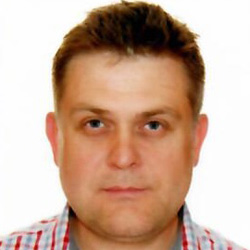
Mgr. Josef Večeřa
Josef Večeřa has worked in the field of culture, first as the manager of the Piece Mound of the Museum of the Brno Region, then as the deputy director for expert activities at the Museum of the Brno Region and also the director of the subsidy museum in Ivančice. He left the museum in 2016 and had accepted an offer to return back into museum profession after a more than a year-long break working for the private sector. Currently, he holds the position of the deputy director for science and technology at the Technical Museum in Brno. He is actively involved in the issues of domestic and foreign museum studies and museology. He has attended numerous local and international conferences and workshops.
Iron Curtain 1948-1989. Exhibition Commemorating the 30th Anniversary of the Fall of the Iron Curtain
Show in programmeThe lecture presents an exhibition on the history of the state border guarding between 1945 and 1989. The exhibition showcases the equipment of the border guards, the ways the people attempted to cross the border of the former Czechoslovakia and the means they used to cross it. It further focuses on the engineering facilities located at the borderline and talks about the life stories and experience of specific people whose lives were directly influenced by the Iron Curtain. The exhibition also deals with the issue of travelling abroad within the period of closed borders when the people living in the Soviet block lived behind the so-called Iron Curtain. The exhibition also presents the Austrian point of view on the Iron Curtain and its implications for the inhabitants of Austria.
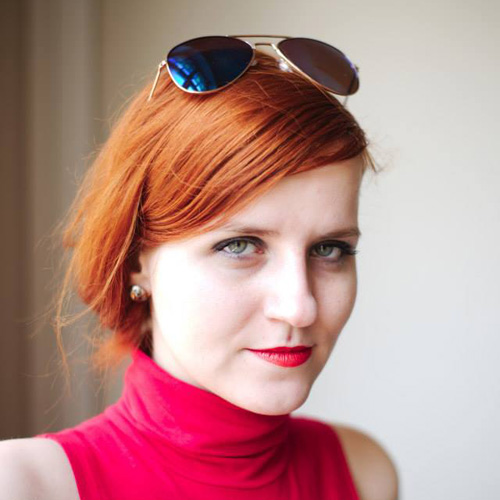
MgA. et Mgr. Anna Soldánová
Anna Soldánová studied at Janáček Academy of Music and Performing Arts in Brno (JAMU in Brno) (Department of Theatre Management with specialisation on production) and Masaryk University in Brno (Department of Museology). She is currently doing her PhD at JAMU focusing at interdisciplinary cooperation of cultural organisations. Her academic and professional interests include management and marketing of memory institutions which is a somewhat attention-deprived field.
She leads online marketing for non-profit and cultural organisations and freelancers in the culture at JAMU. She works as a marketing manager and production specialist at the Regional Museum in Mikulov. She has been working in the field of cultural heritage preservation since 2011 and had worked as a guide at various cultural sites. She was an intern at the National Heritage Institute and has contributed to the projects such as the Luxemburg Year, and she also volunteers as a project manager for non-profit organisations focusing on the animation of cultural sites.
How Many Likes Have You Received Already? – Social Media as Tools for Community Management
Show in programmeWe live in a digital era. Each us leaves a digital trace and each of us is more or less active online. Cultural organisations and museums, in particular, do not fully use their potential in terms of the vast possibilities of the digital era. It does not have to regard only sharing academic successes or making the collections accessible and faster dissemination of invitations for exhibition openings.
The digital world and especially social media can facilitate building communities of loyal museum visitors, and acquire new visitors, e.g. create a relationship between the museum and its visitors. The advantage of online marketing is that it is cheap. Relationships that help create higher visitor rates but of course, also it proves that content visitors can be acquired for free. Museums can receive immediate feedback from their visitors. They can improve their projects (exhibitions) with regards to the visitors‘ opinions and gain higher visitor appreciation. The presentation How many likes have you received already? focuses on the theoretical background of the social network as a tool for community management and defines practical approaches to the utilisation of social networks in museum practice. Museums do not have to and should not wait until someone talks about them or until someone spots the poster. Museums cannot rely on the old mantra that the visitors will come anyway. Thanks to online marketing and the utilisation of social sites, museums can reach out to the visitors even before they enter their physical premises.
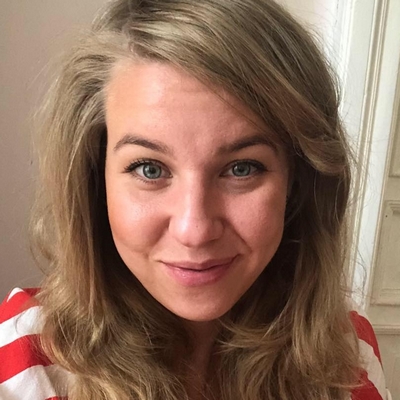
Zuzanna Stańska, B.A.
Zuzanna Stańska: BA History of Art at Warsaw University (thesis: Mobile apps for museums), currently finishing MA History of Art at Jagiellonian University (expected master’s defence: July 2019). Since 2012 the founder at Moiseum, tech consultancy helping museums and cultural institutions to reach their audiences with new tools and the founder at DailyArt – a startup sharing your daily dose of art. Fascinated about using emerging technologies in museums, awarded by Young Creative Entrepreneur Award in Culture category (British Council), mentioned on “New Europe Top 100 Challengers” list made by Visegard Fund, Google, Financial Times and Res Publika, Alumni at Blackbox Connect.
Digital Projects That Help Museums to Communicate with their Audiences in Real Time:
Facebook Chatbots, IBM Watson, and ASK App
If we talk about technologies in museums, we usually limit ourselves to describing the obvious: social media accounts, interactive websites, mobile apps – all that help the audiences to digest content offered by museums. It’s a very one-direction approach. But in 2019 we can spot something new – technologies that help museums to actually connect and communicate with their audiences. By listening to what museum audiences say – what they complain about, what they don’t understand while visiting the institution, museums are now able to fix what is not working in the museum experience. To do that, museums can use a couple of new tools.
Facebook chatbots (cheap scenario) and IBM Watson (very expensive scenario) are based on more or less inteligent Artificial Intelligence. Apps like ASK created by Brooklyn Museum are moderated by humans. But what is most interesting, is the data, those tools generate. By analizing them, museums can just be better – and recreate themselves as places that are designed not only for objects but also for human beings.
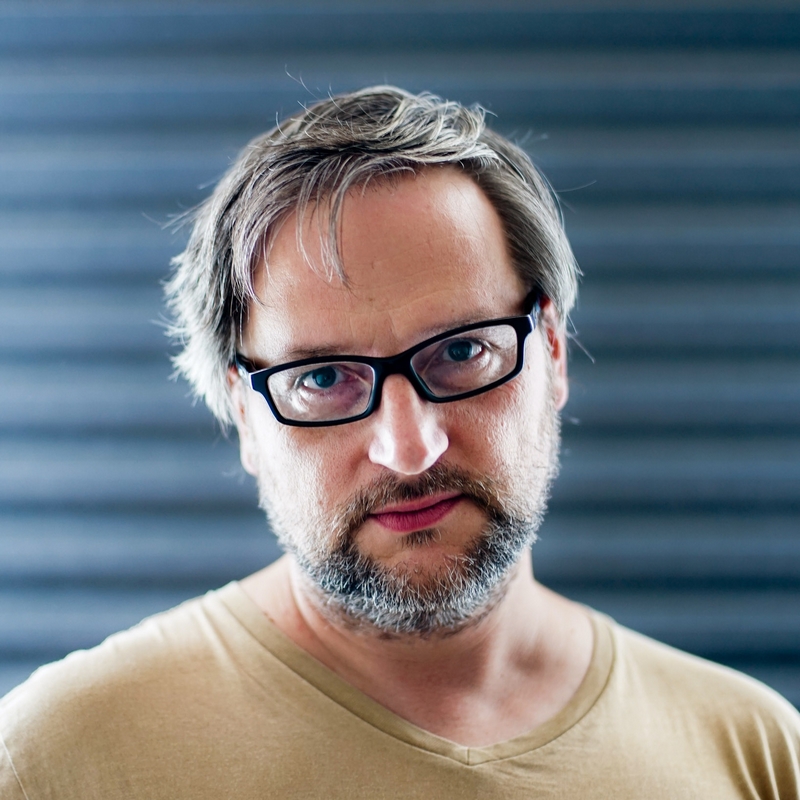
Marek Šulík
Film and TV Faculty of the Academy of Performing Arts, Bratislava
Marek Šulík is a director of documentary movies, film editor, pedagogue at the Film and TV Faculty of the Academy of Performing Arts, Department of documentary creation. On top of that, he also coordinates a project called Family Archives. The aim of this project is digitalisation and categorisation of amateur family audiovisual documents. Selected documentaries: Cesta Magdalény Robinsonovej [Journey of Magdaléna Robinson], 2008; Chcela som byť matka [I wanted to be a mother], 2011; Konzervy času [Can of the time] – Citlivé témy [Sensitive Topics], Takto sa vtedy žilo [This Is How We Lived Back Then], Ostávam s láskou [Farewell With Love], 2012 Roman Berger – lament, protest, nádej [Roman Berger – Lamentation, Protest, Hope], 2014; Ťažká duša [Heavy Heart], 2017.
Recycling Family Film Archives
Show in programmeAmateur family audiovisual documents that were filmed before the world was digitally interconnected were aimed to be viewed only by the family and friends. Back then no one had anticipated that the scenes from Christmas dinners, family celebrations, vacations, or trips to the mountains could be used otherwise than just for sentimental family gatherings. Film amateurs were passionate for new technologies, in the merciless time flow. The digital era can give the film material that would have been otherwise left to decay another chance for a new life. The Slovak project of Family Archives aims to collect, digitise and catalogue family movies in order to make it accessible for the public in the most sensible way.

Institute of Technology and Innovation
Company profile: Institute of Technology and Innovation s.r.o. has been on the market since 2008 and specialises in media art, digital culture and unique technological solutions. Our goal is to find a solution on how to combine two areas – creative content and new technologies in order to create a functional and meaningful unit. We are offering original solutions for presentation; we create scenarios, visual content and animations of universal quality. We can offer complete solutions for expositions and project documentation from the beginning until the final realisation. Our objective is to create longterm and sustainable solutions that allow variability of each of the projects. We are the leading contractor of complete interactive and nonstandard solutions for clients that are not afraid of the future.
Today, Here and Now
Show in programmeThe goal of the lecture „Today, Here and Now“ is to show how creative content and new technologies can be paired to create an extraordinary story for each of the exhibitions. Peter Matuška will discuss this fact by presenting the realisation of the exposition of the Slovak National Uprising in Banská Bystrica which is at the moment the latest digital exhibiti on in Slovakia. It consists of nine projecti on surfaces, and it has been processed into 16 catching educative videos. The exhibition can be operated from anywhere in the world and there is also a unique panorama projection with a 12 metres curve with a particular short movie on the Slovak National Uprising that was shot specifically for the site.
Further, Mr Matuška will describe original solutions for presentations that are available also in Slovakia and are of worldwide quality. He will explain the possibilities of the utilisation of such a solution, and why the museums should not be afraid to apply them in practice. Each of the exhibitions is unique, and no digitalisation can replace physical exhibits. However, it can reveal the secret story behind each of the exhibits.
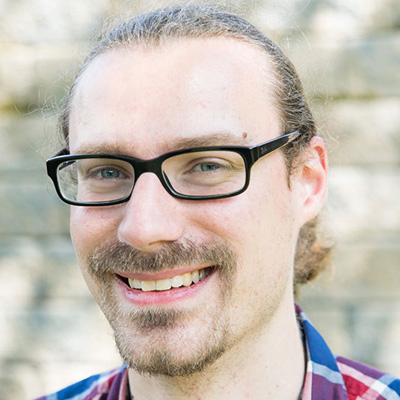
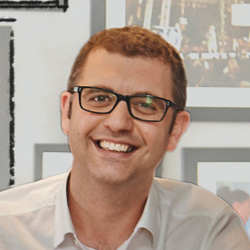
Florian Wienczek, PhD & Dr. Kasra Seirafi
Florian Wiencek, is an expert on the interface of Digital Media and Cultural Learning. He earned his B.Sc. in Digital Media and M.A. in Art and Cultural Mediation from the University of Bremen and his PhD in Visual Studies at Jacobs University Bremen. He works at Fluxguide in the areas of digital concepts, project management and R&D. He recently published his PhD-thesis on the topic of “Digital Mediation of Art and Culture. A Database Approach”. In this research, he analyses how digital media and digital data with their characteristics and affordances are currently employed in practices of mediation of art and culture and for cultural learning and how this can help museums to tackle the challenges of the 21st century. Florian Wiencek has experience as a researcher and lecturer in the area of cultural mediation, visual studies and digital humanities in the Department for Image Science at Danube University Krems, the department of Art, Art History & Visual Studies at Duke University (Durham NC, USA), and Jacobs University Bremen and has worked in the areas of science communication, exhibition design as well as curation.
Dr Kasra Seirafi: PhD from University of Vienna (Austria) and Stanford University (USA), M.A. from University of Vienna (Austria), B.Sc. from University of Derby (UK). As a professional in leading positions, Dr Kasra Seirafi contributed to the field of knowledge management systems, E-Learning, mobile innovations, cultural heritage technologies, and more. Currently, he works as founder and managing director at the technology SME Fluxguide. He has 20+ years of experience in industry and research projects worldwide as well as researcher and lecturer at international universities. Dr Seirafi provides experience both in leading and contribution functions within several FP7 and Horizon 2020 projects and local research activities.
HoloMuse – Museum Learning with Augmented Reality
Show in programmeAugmented Reality (AR) is currently a hyped topic inside and beyond the museum world, as this technology offers unprecedented new possibilities for inspiring visitor experiences, cultural and science learning as well as for curating and designing exhibitions. But what are the affordances, strengths and weaknesses of AR in relation to other forms of digital mediation and cultural learning? What role can AR play in the media mix of a digital museum infrastructure? What are the novel possibilities for storytelling, co-creative knowledge generation and experiences the medium opens up? What is currently still missing, though are mediation concepts and strategies for the effective employment of AR for cultural learning.
The research project HoloMuse by Fluxguide is currently conceptualizing such strategies together with museum stakeholders and piloting them in leading Museums such as Kunsthistorisches Museum Vienna or Deutsches Museum in Munich. The paper will present results from the HoloMuse-project focusing on best practices in the employment of AR for museum learning. The authors will discuss what is the state of the art of AR in the museum, the needs and understanding of different stakeholders with regard to museum augmentation as well as concepts and mediation strategies effectively using AR for cultural learning resulting from these insights.

Christa Zahlbruckner, MA
Museumsmanagement Niederösterreich
Christa Zahlbruckner graduated at the University of Vienna with a bachelor degree in German Philology and a master degree in Austrian Studies. She has been working in the cultural sector and is currently coordinating two EU-funded projects at the Museumsmanagement Lower Austria, where one project is focusing on the digitalization of museum collections.
A Connected Database as a Benefit for Regional Museums
Show in programmeNo matter in what time nor in what country all interesting stories and fundamental information museums can offer are relying on their unique collections. Museum work is usually dealing with different conditions and individual situations. A common task is to face digital trends in various areas.
The challenge is, on the one hand, to have always the relevant object data available and on the other hand, to approach a new digital audience. The new database DIP.noemuseen tries to offer the equipment for both intentions. The Museumsmanagement Lower Austria coordinates the connected database DIP, especially since smaller institutions are facing a lot of barriers on the way to digitalize their collections. The insight of the DIP database and the project Heritage SK-AT will show the working steps and ongoing progress of a digitalization project on a connected level, the benefits of the digital opportunities also for regional museums and smaller institutions and the use of the digital data for a research community as a well as for the museum audience.


